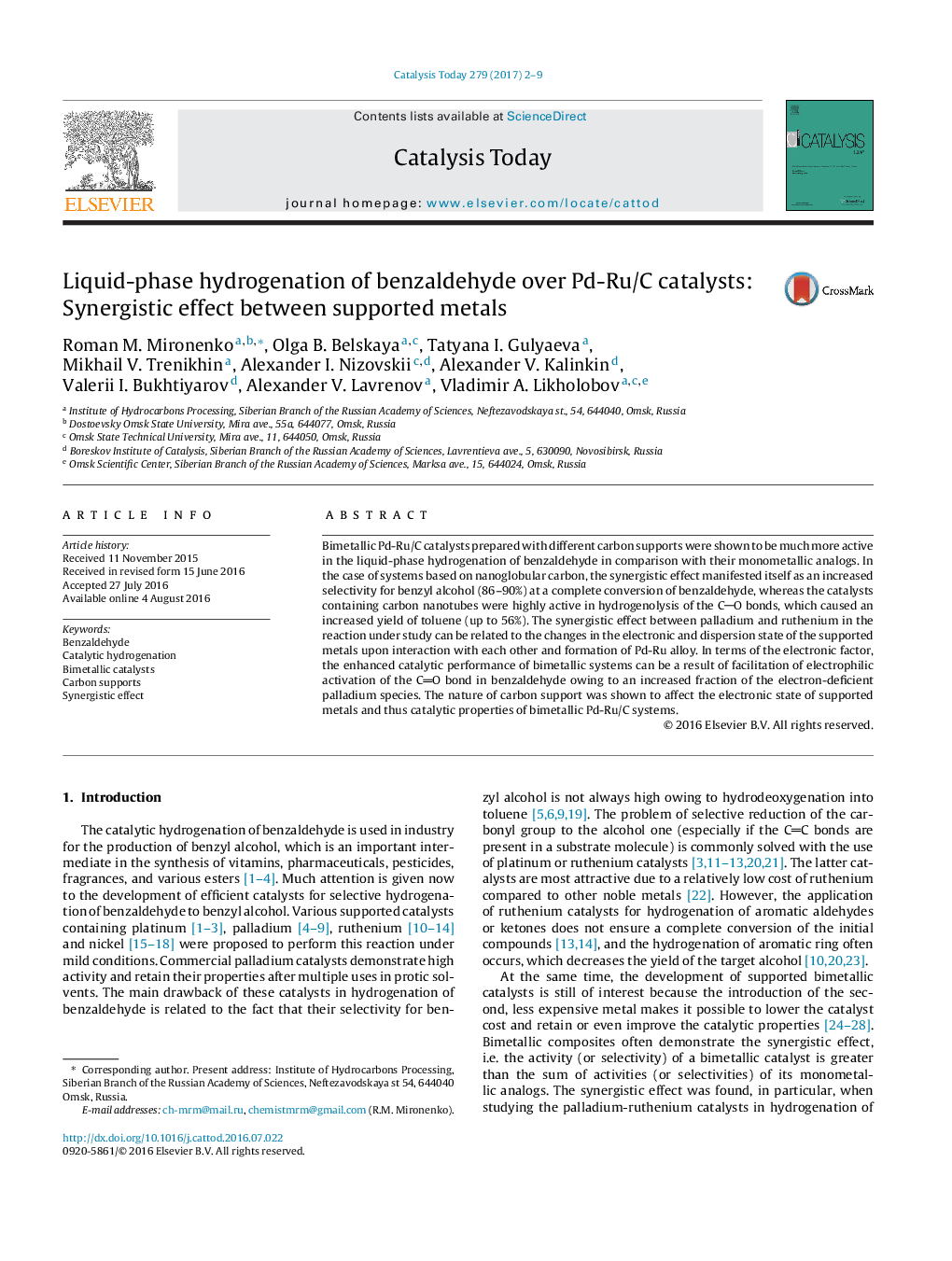| کد مقاله | کد نشریه | سال انتشار | مقاله انگلیسی | نسخه تمام متن |
|---|---|---|---|---|
| 4757289 | 1361634 | 2017 | 8 صفحه PDF | دانلود رایگان |

- Synergistic effect between Pd and Ru in benzaldehyde hydrogenation was observed.
- Pd-Ru/NGC catalysts are highly selective for benzyl alcohol.
- Pd-Ru/CNTs are highly active in hydrogenolysis of CO bonds.
- The formation of Pd-Ru alloy is one of the reasons of synergistic effect.
Bimetallic Pd-Ru/C catalysts prepared with different carbon supports were shown to be much more active in the liquid-phase hydrogenation of benzaldehyde in comparison with their monometallic analogs. In the case of systems based on nanoglobular carbon, the synergistic effect manifested itself as an increased selectivity for benzyl alcohol (86-90%) at a complete conversion of benzaldehyde, whereas the catalysts containing carbon nanotubes were highly active in hydrogenolysis of the CO bonds, which caused an increased yield of toluene (up to 56%). The synergistic effect between palladium and ruthenium in the reaction under study can be related to the changes in the electronic and dispersion state of the supported metals upon interaction with each other and formation of Pd-Ru alloy. In terms of the electronic factor, the enhanced catalytic performance of bimetallic systems can be a result of facilitation of electrophilic activation of the CO bond in benzaldehyde owing to an increased fraction of the electron-deficient palladium species. The nature of carbon support was shown to affect the electronic state of supported metals and thus catalytic properties of bimetallic Pd-Ru/C systems.
127
Journal: Catalysis Today - Volume 279, Part 1, 1 January 2017, Pages 2-9